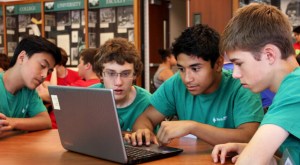Study: Virtual schools are gaining momentum, but performance lags

Enrollment in virtual schools around the country is increasing, but new models must be created in order to better serve students as performance levels lag behind those of traditional schools, according to a new report from the National Education Policy Center (NEPC), a
nonprofit research center located in the
School of Education at the University of Colorado at Boulder.
The NEPC’s sixth annual report on virtual education focuses on full-time virtual schools, where teachers conduct lessons remotely through electronic communication, and blended learning schools, which combine online instruction with traditional face-to-face lessons.
Enrollment in virtual schools surged by 17,000 students between the 2015-16 and 2016-17 school years, while enrollment in blended learning schools grew by 80,000 during the same period.
“Although [blended] schools still account for a relatively small portion of the overall school
choice options in the U.S., they constitute some of the fastest-growing options, overlapping
with both homeschooling and charter schools,” according to the report.
The study shows that poor performance at these schools is triggered by large school sizes and large student-to-teacher ratios. While the average ratio in the nation’s public schools is 16 students
per teacher, virtual schools reported having close to three times as many, and blended schools
clocked in with twice as many.
The report’s authors suggest that policymakers, along with state agencies charged with overseeing schools, should get more involved.
“Policymakers should slow or stop the growth in the number of virtual schools and
in the size of their enrollments until the factors responsible for their relatively
poor performance have been addressed,” they write. “Authorities charged with oversight should specify and enforce sanctions for virtual and blended schools that perform inadequately.”
According to the analysis, as of the 2016-17 academic year, 34 states had full-time virtual schools — like Nebraska has the Omaha Virtual School — and 29 states had blended schools.
The report found that, while for-profit companies have traditionally retained a fierce hold on this sector, there is a growing number of brick-and-mortar districts opening their own virtual schools to supplement instruction for students with low attendance rates or who may need alternative methods of instruction.
In 2016-17, district virtual schools accounted for 24 percent of all virtual enrollments, up from nearly 18 percent in 2015-16, according to the report.
But while this mode of educating students is gaining popularity, virtual schools continue to underperform academically: overall, about 36 percent of full-time virtual schools and 43 percent of blended schools received acceptable ratings, according to available data. The graduation rates are not much better — that figure stands at about 50 percent in both virtual schools and blended schools, below the national average of 83 percent.
K12 Inc. has remained the largest education management organization to run virtual schools, but the controversial corporation, which has been accused of mismanaging funds, may be losing its foothold. Enrollment in its 76 virtual schools dropped by 12,418 students in the past year. Rocketship Education, a nonprofit that operates 16 tech-focused schools with more than 7,700 students, is the largest operator of its kind in this field, according to the analysis.
Reach the reporter at corinne.lestch@edscoop.com and follow her on Twitter @clestch and @edscoop_news.




